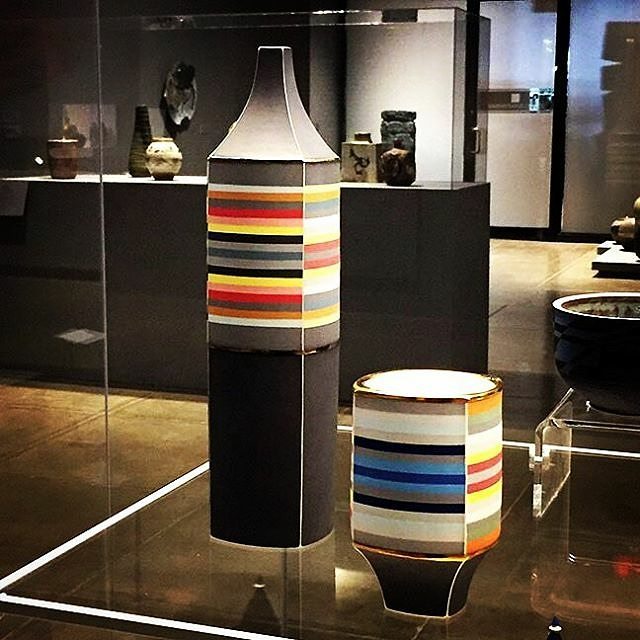The inaugural exhibition in the Everson’s newly renovated ceramics gallery, A Century of Collecting, celebrates the 100th anniversary of the Museum’s first purchase of ceramics for the permanent collection and commemorates the Museum’s long-term commitment to the ceramic arts. Over the last one hundred years, the Everson’s ceramics collection has gained an international reputation as one of the largest and most significant repositories of ceramics in the United States, with particularly strong holdings in 20th century American works. The Everson’s collection continues to evolve and grow today, building on the innovative collecting practices and groundbreaking programming spearheaded by several directors over the course of the Museum’s 120 year history.
Fernando Carter, the Everson’s second director, first established the Museum as a showcase for modern ceramics by purchasing 32 porcelains by preeminent Arts and Crafts potter Adelaide Alsop Robineau in 1916. A second purchase in 1930 brought an additional 53 of her works to the Everson, including the famed Apotheosis of the Toiler (also popularly known as the Scarab Vase), believed to be Robineau’s greatest masterpiece. Robineau’s work anchored the expanding collection at a time when most art museums around the country directed attention to paintings or sculpture. Through these acquisitions, Carter built a framework that shaped the Everson’s future focus on American ceramics. In 1932, under the leadership of director Anna Olmsted, the Museum established the Ceramic National exhibitions in tribute to the late Robineau. This series of juried exhibitions attracted artists from across the country and helped launch the careers of many notable ceramicists. These exhibitions had a significant impact on the public’s perception of ceramics, changing the view of pottery from craft to a respected art form. The Everson purchased prize-winning works from every Ceramic National, which over the decades led to an incomparable collection of 20th century American ceramics. Not content to simply rest on the success of the Ceramic Nationals, director James Harithas, along with artist and curator Margie Hughto, set out in 1972 to challenge the format, presentation, and limits of clay as a medium for artist production. Harithas’s successor, Ronald Kuchta, continued to work with Hughto, and in 1976 New Works in Clay by Contemporary Painters and Sculptors opened at the Everson. The success of this project spurred a series of exhibitions, lectures, and acquisitions that continues to guide the Everson’s central role in contemporary American ceramics. Also during this period, the Everson broadened its purview to include ceramics from across the globe, with an emphasis on the works of contemporary Asian artists.
Today, the Everson’s remarkable collection features more than 5,000 ceramic works dating from ancient times to the present day from all over the world. A Century of Collecting focuses on the heart of the Everson’s collection—modern and contemporary studio ceramics—showcasing some of the key works that have entered the Museum’s collection since it was established. From the initial purchase of Robineau porcelains in 1916 to a promised gift in 2016, this exhibition traces the Everson’s role as a pioneering and steady force in shaping ideas, attitudes, and histories within the expanding world of ceramics. The renovation of this gallery and its inaugural exhibition, A Century of Collecting, were made possible through the generosity of Sharon Sullivan and Paul Phillips, the Quigley Hiltner Fund, Community Bank, Louise and David Rosenfield, Karen and William P. Fisher, and more than one hundred supporters from the Syracuse community and beyond.

Peter Pincus Bottle with Cup, 2015 Slip-cast colored porcelain with gold luster accent Promised gift of Louise and David Rosenfield

Adelaide Alsop Robineau Scarab Vase (Apotheosis of the Toiler), 1910 Porcelain, 16 ⅝ x 6 inchesMuseum purchase



